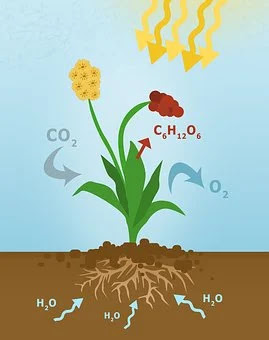- Photosynthesis is a life process powered by the sun.
Directly or indirectly through the organic phenomenon, it fuels most life on Earth.
Photosynthesis is allotted by inexperienced plants and a few kinds of alga further as by cyanobacteria(formerly called blue-green algae) and connected organisms, that square measure liable for the chemical change in oceans.
In the method of chemical change, plants capture daylight and absorb CO2 from the atmosphere.
The light and CO2 mix with water brought in by plant roots.
The end product is sugars, food for the plant: a material is O, respired out through the plant leaves.
Read More:
- What Is The Greenhouse Effect?
- How do we clean oil spills?
- what is photosynthesis?
- What did Darwin learn in the Galapagos?
- What Is The Future Of Trash?
- What Is An Iceberg?
- How Do Dams Work?
- Thus plants use the CO2 that animals take a breath and supply the O that animals respire.
- Photosynthesis all the food we have a tendency to eat----plants and animals that eat plants---and the O we have a tendency to breathe.
- If chemical change were to stop, the atmosphere's O would doubtless be depleted at intervals many thousand years.
- Photosynthesis conjointly created the raw materials for fossil fuels we have a tendency to thus rely on.
- Green plants fashioned the majority of the organic deposits through a geologic process that was reworked into coal, oil, and fossil fuel.
So this is all about what is photosynthesis?. Hope you like it.
Do post your comment.




